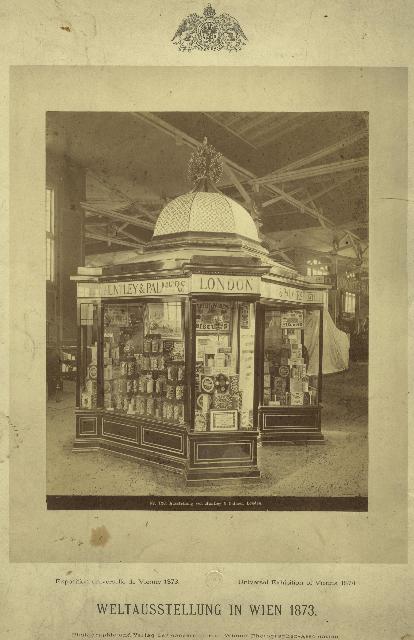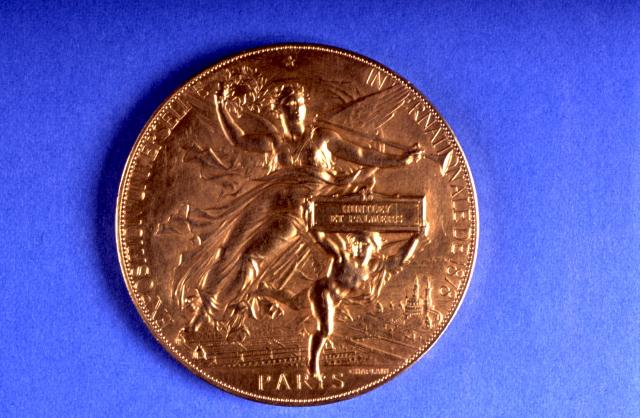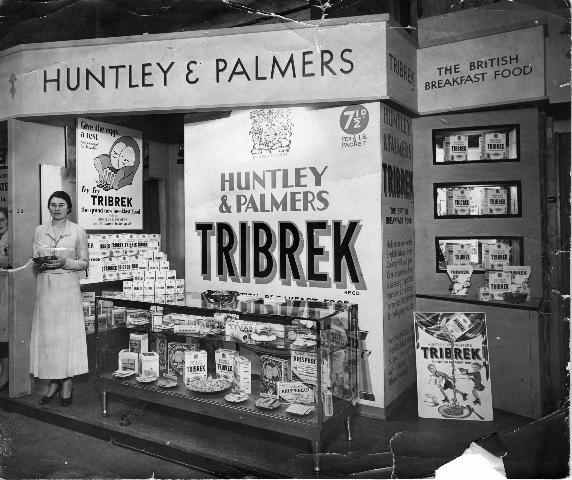Huntley & Palmers won their first medal on the international stage at the Universal Exhibition in Paris in 1867. For the next 11 years until 1878 they won an average of one medal a year from exhibitions as far afield as Lima and Santiago. During this time their showcases became more striking as shown by this photograph of their display at the exhibition in Vienna 1873.

Huntley & Palmers' case at the Universal Exhibition of Vienna in 1873 earned the company a bronze medal 'for progress in new inventions and the introduction of new materials and contrivances'. (REDMG : 1997.130.564)
The Paris Exhibition 1878
The firm also became aware of the considerable publicity that could be gained from giving away free samples of biscuits. At the Paris exhibition in 1878 visitors to the stand were encouraged to sample biscuits while admiring the magnificent display. These new techniques clearly paid off when the firm won the Gold Medal. This 'Grand Prix' gave the firm its first major success and established its name internationally as one of the great exhibition winners of all time.

This is the grand prix medal won at the Paris Exhibition of 1878. The prize jury praised the company, calling it the 'unrivalled house, known throughout the world for its enormous output and for the excellent quality of its products'. (REDMG : 1996.242.8)
Unfortunately, after their success at Paris, the imposition of trade barriers across Europe discouraged Huntley & Palmers from exhibiting again in Europe for 22 years. With the exception of one or two international exhibitions, such as Havana in 1892, Huntley & Palmers withdrew from the field of global exhibitions. However by 1900 they felt ready to exhibit again and had clearly not lost their ability as they were awarded two first prizes at the Paris Exhibition.

Tribrek breakfast cereal and New Era cakes both take centre stage at this mid 1930s Huntley & Palmers exhibition stand, probably at the Ideal Home Exhibition. (REDMG : 1997.130.96)
Foreign visitors to the firm
The reputation of Huntley & Palmers spread through their successes at international exhibitions. In 1872 the Japanese ambassador visited the Huntley & Palmers' factory to gather information on Western industrial processes. Translations of the Japanese report include references to the presence of a Mr Huntley. This was puzzling because Mr Huntley had died in 1857. A possible explanation is that it was too confusing to explain to the Japanese party that the Huntley family was no longer connected with the business. George Palmer therefore spent the visit passing himself-off as the long-gone Mr Huntley and William Isaac Palmer as George!
In the next section, learn about Huntley & Palmers' international advertising.





